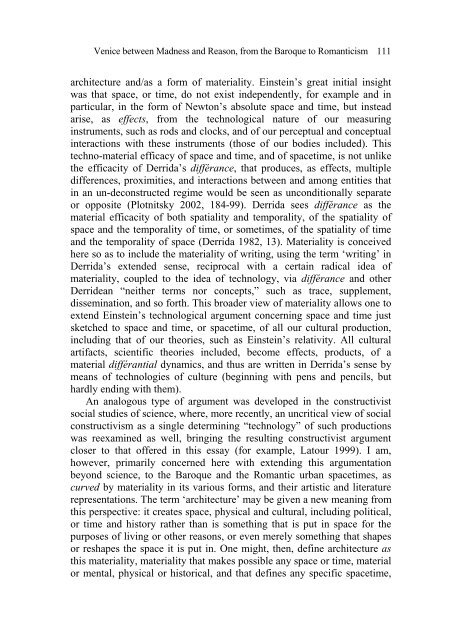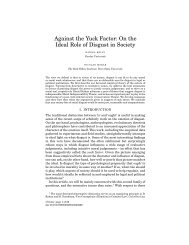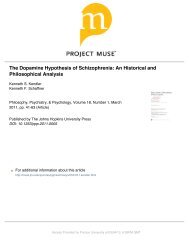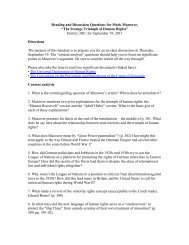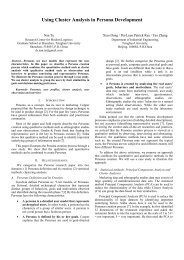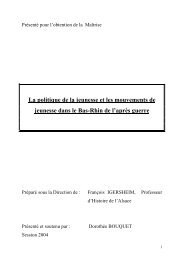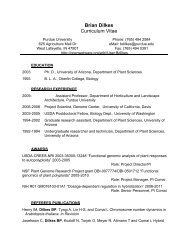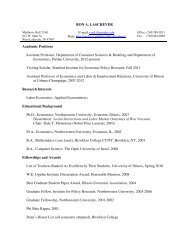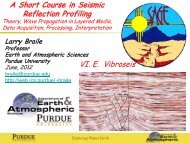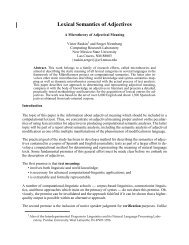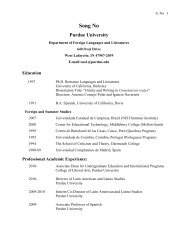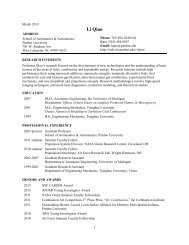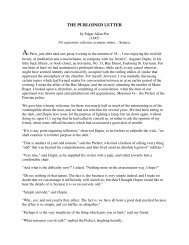'a palace and a prison on each hand': venice between madness and ...
'a palace and a prison on each hand': venice between madness and ...
'a palace and a prison on each hand': venice between madness and ...
Create successful ePaper yourself
Turn your PDF publications into a flip-book with our unique Google optimized e-Paper software.
Venice <strong>between</strong> Madness <str<strong>on</strong>g>and</str<strong>on</strong>g> Reas<strong>on</strong>, from the Baroque to Romanticism 111<br />
architecture <str<strong>on</strong>g>and</str<strong>on</strong>g>/as a form of materiality. Einstein’s great initial insight<br />
was that space, or time, do not exist independently, for example <str<strong>on</strong>g>and</str<strong>on</strong>g> in<br />
particular, in the form of Newt<strong>on</strong>’s absolute space <str<strong>on</strong>g>and</str<strong>on</strong>g> time, but instead<br />
arise, as effects, from the technological nature of our measuring<br />
instruments, such as rods <str<strong>on</strong>g>and</str<strong>on</strong>g> clocks, <str<strong>on</strong>g>and</str<strong>on</strong>g> of our perceptual <str<strong>on</strong>g>and</str<strong>on</strong>g> c<strong>on</strong>ceptual<br />
interacti<strong>on</strong>s with these instruments (those of our bodies included). This<br />
techno-material efficacy of space <str<strong>on</strong>g>and</str<strong>on</strong>g> time, <str<strong>on</strong>g>and</str<strong>on</strong>g> of spacetime, is not unlike<br />
the efficacity of Derrida’s différance, that produces, as effects, multiple<br />
differences, proximities, <str<strong>on</strong>g>and</str<strong>on</strong>g> interacti<strong>on</strong>s <strong>between</strong> <str<strong>on</strong>g>and</str<strong>on</strong>g> am<strong>on</strong>g entities that<br />
in an un-dec<strong>on</strong>structed regime would be seen as unc<strong>on</strong>diti<strong>on</strong>ally separate<br />
or opposite (Plotnitsky 2002, 184-99). Derrida sees différance as the<br />
material efficacity of both spatiality <str<strong>on</strong>g>and</str<strong>on</strong>g> temporality, of the spatiality of<br />
space <str<strong>on</strong>g>and</str<strong>on</strong>g> the temporality of time, or sometimes, of the spatiality of time<br />
<str<strong>on</strong>g>and</str<strong>on</strong>g> the temporality of space (Derrida 1982, 13). Materiality is c<strong>on</strong>ceived<br />
here so as to include the materiality of writing, using the term ‘writing’ in<br />
Derrida’s extended sense, reciprocal with a certain radical idea of<br />
materiality, coupled to the idea of technology, via différance <str<strong>on</strong>g>and</str<strong>on</strong>g> other<br />
Derridean “neither terms nor c<strong>on</strong>cepts,” such as trace, supplement,<br />
disseminati<strong>on</strong>, <str<strong>on</strong>g>and</str<strong>on</strong>g> so forth. This broader view of materiality allows <strong>on</strong>e to<br />
extend Einstein’s technological argument c<strong>on</strong>cerning space <str<strong>on</strong>g>and</str<strong>on</strong>g> time just<br />
sketched to space <str<strong>on</strong>g>and</str<strong>on</strong>g> time, or spacetime, of all our cultural producti<strong>on</strong>,<br />
including that of our theories, such as Einstein’s relativity. All cultural<br />
artifacts, scientific theories included, become effects, products, of a<br />
material différantial dynamics, <str<strong>on</strong>g>and</str<strong>on</strong>g> thus are written in Derrida’s sense by<br />
means of technologies of culture (beginning with pens <str<strong>on</strong>g>and</str<strong>on</strong>g> pencils, but<br />
hardly ending with them).<br />
An analogous type of argument was developed in the c<strong>on</strong>structivist<br />
social studies of science, where, more recently, an uncritical view of social<br />
c<strong>on</strong>structivism as a single determining “technology” of such producti<strong>on</strong>s<br />
was reexamined as well, bringing the resulting c<strong>on</strong>structivist argument<br />
closer to that offered in this essay (for example, Latour 1999). I am,<br />
however, primarily c<strong>on</strong>cerned here with extending this argumentati<strong>on</strong><br />
bey<strong>on</strong>d science, to the Baroque <str<strong>on</strong>g>and</str<strong>on</strong>g> the Romantic urban spacetimes, as<br />
curved by materiality in its various forms, <str<strong>on</strong>g>and</str<strong>on</strong>g> their artistic <str<strong>on</strong>g>and</str<strong>on</strong>g> literature<br />
representati<strong>on</strong>s. The term ‘architecture’ may be given a new meaning from<br />
this perspective: it creates space, physical <str<strong>on</strong>g>and</str<strong>on</strong>g> cultural, including political,<br />
or time <str<strong>on</strong>g>and</str<strong>on</strong>g> history rather than is something that is put in space for the<br />
purposes of living or other reas<strong>on</strong>s, or even merely something that shapes<br />
or reshapes the space it is put in. One might, then, define architecture as<br />
this materiality, materiality that makes possible any space or time, material<br />
or mental, physical or historical, <str<strong>on</strong>g>and</str<strong>on</strong>g> that defines any specific spacetime,


